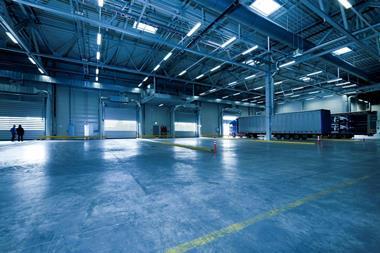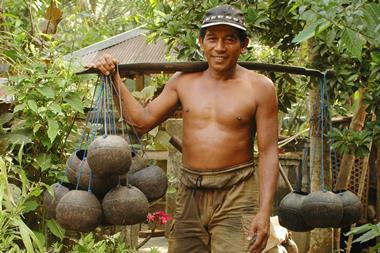Good news abounds in South America where widespread reform has borne results, with four of the continent's major markets now investment grade. However, political and economic risks are significant, as Stephanie Schwartz-Driver reports
Increased political and economic stability, a growing middle class, and booming economies have been attracting institutional investment to Latin America in recent years. Whereas Mexico and Brazil are already more familiar to global investors, smaller markets, such as Chile, Argentina, and Colombia, are also revealing their potential.
Latin American economies are showing strength even as European and North America markets are being buffeted by economic slowdown, making them even more attractive to pension fund investors eager to show positive returns. Throughout the region, a growing middle class is driving economic growth and creating real estate investment opportunities, from residential - both primary residences and second homes - to class A office properties, retail centres, industrial, and even a burgeoning interest in hospitality as domestic tourism starts to develop.
However, Roberto Ordorica, head of Pramerica Real Estate Investors - Latin America, cautions against looking at Latin America as a substitute for poor performing home markets. "Don't go to Latin America only because you cannot find opportunities elsewhere. Look at it for its own merits," he encouraged.
The positives about Latin America are pretty compelling. Over the past 15 years or so, many Latin American countries have put in place measures that are allowing them to face a tough global environment in very good shape. They have revamped their economies, privatised growing industries, and begun to exploit rich seams of natural resources. Peru, Brazil, Chile, and Mexico have all be granted investment grade ratings by Fitch and S&P.
For the first quarter of 2008, GDP grew significantly in many national markets, for example by 5.8% in Brazil, 2.6% in Mexico, 3.0% in Chile, and 8.4% in Argentina.
Mexico's economy is more coupled to the US economy than is the case with the other countries in the region. For example, its equity markets showed a loss at the end of the second quarter of 2008, unlike other Latin American countries that outperformed the S&P 500 significantly. But although these days this coupling is exacting something of a cost, at the same time, it has helped to attract foreign investment to the country.
"The changes in Mexico's political landscape, monetary policy, and open trade markets have led to significant, quantifiable achievements that make Mexico a compelling and strategic real estate market," said Howard Goldman, director of communications for the Teacher Retirement System of Texas, an established investor in the market with positions in a retail fund, an industrial fund, and a residential fund invested in Mexico and relationships with Pramerica and Prologis.
"In Mexico, the bench of development and capital sources is deeper even than in Brazil," said Pierre Arriz, general manager and vice president, Hines. "It is more competitive here, so you need better product and a better value proposition, you have to be a better manager at the margin, more adept at leasing, and you have to have better relations with the authorities," he said.
Hines is one of the few firms active in Mexico that is a developer with its own capital, noted Arriz; the normal pattern in the country is that "there are lots of capital allocators looking to place money with developers and lots of developers looking for funding. He cautioned that many of the developers are new to the market and thus less knowledgeable both about the markets and about the bureaucracy that must be negotiated to get projects off the ground and successfully completed.
Hines focuses on retail, industrial, office, and vertical residential. Arriz stressed that the firm steers clear of hospitality and second homes, after a market review three years ago during which they concluded that there was already too much money pouring in.
For the other sectors the firm largely focuses on the area sometimes known as the "heartland of Mexico," the triangle formed by the cities of Monterrey, Guadalajara, and Mexico City. "These are the only cities that will support class A office developments," he said. While Hines focuses on the big cities for office, the firm looks to smaller cities for its retail developments. "Our strategy is focused on going to cities that are less crowded. We are more opportunistic because there is too much retail money around."
Other firms are seeing good opportunities in residential in Mexico as well as Brazil, because both countries are experiencing a shortage of modern housing: there is a shortfall of around 8m domiciles in Brazil and around 5m in Mexico, according to John Mancuso, research analyst at Russell Investments. He cited the combination of attractive government incentives and the availability of credit as two key conditions that make the sector attractive to institutional investors.
Pramerica has recognised the opportunity and has been developing more than 150,000 homes in more than 30 cities in Mexico. Prices range from around $20,000 to more than $1m, to capture a broad clientele ranging from first-time buyers to overseas second-home buyers.
Roberto Ordorica stressed that the Mexican government has long recognised the importance of home ownership to the creation of a thriving economy. Since 1971, he pointed out, the government implemented a fund source for government-sponsored mortgage lending in the form of the Infonavit. Every private sector employee contributes 5% of salary to an account dedicated to mortgage lending. So far, government incentives have facilitated the selling of some 3m homes in the country.
In addition to government institutions, commercial banks and specialised mortgage banks are also active. All mortgages are of the "plain vanilla" type, limiting the risk of a credit meltdown as seen in the US. There is some vulnerability in the system, noted Ordorica, as the mortgage banks are finding it harder to raise money in the capital markets are they are being squeezed as spreads for mortgage-backed securities have tightened.
Adding a note of caution, Arriz notes a slight economic contraction. "Mexico is starting to show symptoms: there has been a rise in defaults on consumer credit and a slowdown in retail, he said. Some of this contraction may relate to a decrease in remittances from the US to Mexico, a result of the financial squeeze there, which has had an impact on retail, noted Mancuso. At the same time, the peso has started to appreciate against the dollar, which may threaten exports.
Brazil similarly has seen a rise in home ownership as credit markets have developed. "In Brazil in recent years, because of the strength of the banks, there has been a big push to developed a credit market - and at the same time, interest rates have been coming down. The development of mortgages ha fueled an opportunity for institutional investors," said Ordorica.
Economically over the last 18 months Brazil has done everything right and has seen inflows of foreign investment to prove it. While some investors maintain that there are no more big opportunities in Brazil because of the volume of capital that has already been invested, but Ordorica disputes that.
"People see the mount of capital that has come into Brazil recently and compare it to what came in before - they see an astronomical difference and that drives the idea that there are no more opportunities," he said. But he noted that these are the "big fish" investors, those who go only to São Paolo and Rio and think that they have seen Brazil. "It's true that there are a lot of people chasing deals in São Paolo," said Ordorica, " but there are more than 10 cities with population of over 1m, significant cities with real estate demands.
Brazil's current economic strength and soundness makes investment in the country appealing. It is the largest country in the region, accounting for 38% of the regional population - scale is a important factor for institutional investors who may have significant amounts of capital to deploy. Brazil is self-reliant in terms of food production; it has significant oil reserves; and along with Mexico it is the economic engine for Latin American growth.
"A lot of capital is targeting Brazil, and a skilled manager will do well," noted Mancuso, who also pointed out that "there has been an increase in local groups in Brazil that are seeking to become fund managers." That said, Brazil has not been covered as well as Mexico by investment managers, a result of decades of poor economic performance that led to a perception that it was a more risky market than, for example, Mexico.
"Office and industrial are both attractive in Brazil," said Mancuso. "A lot of existing product is not of international standards." In terms of industrial, there is demand not only for warehouse space for export-oriented businesses, but also for manufacturing: Brazil already is the fourth largest auto producer in the world and vehicle production over the last 12 months has increased by over 23%.
"Because of the ties that historically exist between South America and many European countries, European investors considering Latin America tend to start there. There are more European investors in Brazil than there are in Mexico," pointed out Pramerica's Ordorica. He noted that in assessing overseas opportunities, familiarity becomes very important - and Buenos Aires, in Argentina, is often called the Paris of South America.
Investor interest in Argentina is growing. Its fundamentals are in many ways promising, especially its rich agricultural sector that includes grains that are a potential source of biofuels going forward.
Tourism is also booming, with Buenos Aires and also Patagonia attracting visitors from the Americas and Europe, noted Scott Mathis, chairman of DPEC Partners, an investment firm focused on Argentina. There were more than 4.5m visitors to the country in 2007, including 2.2m visitors to Buenos Aires. As a result Argentina is experiencing a real shortage of quality hotel rooms, making the hospitality sector a good bet for investors. Major hotel chains, including Park Hyatt, St. Regis, and Four Seasons, have established themselves in Buenos Aires already.
However, Mathis noted that the political and economic risks are significant. "High inflation is a risk," he said, noting however that, "the base of where the country is starting from is so low" that even with high inflation, good values are still easily found. Ordorica also noted that "there is more volatility than we would like in Argentina," pointing specifically towards what he termed "stubborn policy responses" on key economic issues that are slowing growth in foreign investment.
Real estate taxes in Argentina have increase substantially over the last 12 months, which has been a major disincentive to new construction. As a result, vacancy rates are close to zero for class A construction, meaning that the opportunity is there for intrepid developers and investors to take a bet on the country. Notably, in July the government rescinded high taxes on grain exports following protests by producers, "a sign that democracy is in action," said Mathis.
As Ordorica points out, taxation can be a vexing issue in any country in the region. "This is an area that needs a lot of attention. The tax code of each country is different and subject to change. This is not necessarily a bad thing - the countries are modernizing their tax codes - but investors have to be prepared and be aware." He stresses, in this context, the importance of a local presence in the region.
The key to Argentinean investment, Mathis and Ordorica agree, is a long-term view. "We put Argentina in an opportunistic bucket. Investors have to makes investment with a 10-year horizon at a minimum.
Transparency is also a vexing issue in Argentina, noted Mathis. "As more institutional investors, forcing more transparency, things will change, but this will take many years, he said. "But when the market is more transparent, then prices will rise."
In Chile, on the other hand, transparency is not an obstacle to doing business. The country began its economic reform process some two decades ago, and is well known as an easy place to do business in Latin America. Copper trading has brought prosperity and a thriving middle class although there is risk from falling commodity prices.
However, Chile represents only 3% of the region's total population. Even Chile's main retailers, profitably doing business domestically, are leading the charge into cross-border business in South America to break out of the limitations of the country's size.
But profitability also means that there is sound demand for office properties in Santiago, the capital city, where vacancy rates are below 1% and new construction may not be meeting pent-up demand.
Ordorica points out that like Chile, some of the other small markets in Latin America, such as Colombia and Peru, and even the countries in Central America, Costa Rica and Panama in particular, offer good prospects. "The countries are very small but they can be looked at more like a region," he noted. "If you put them together, then they look very attractive." And although these markets are small in relative size, they are also thinly traded, with fewer investors chasing opportunities.












